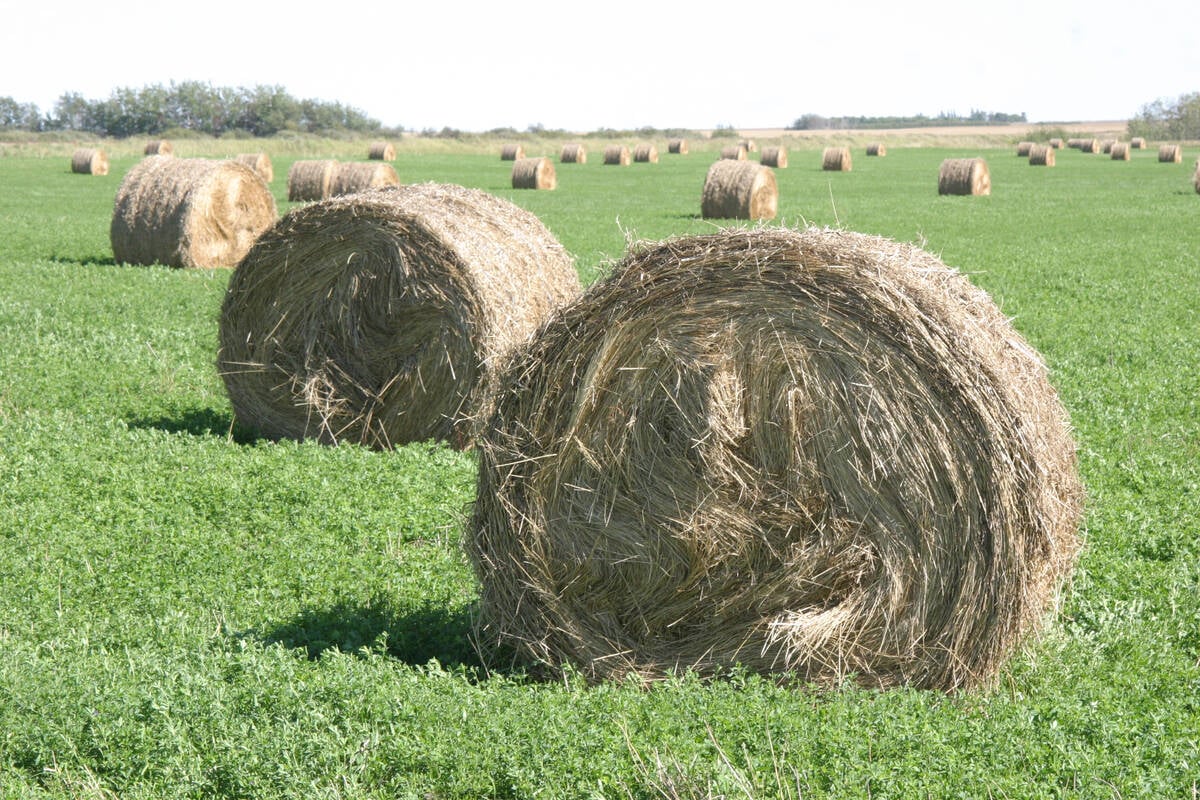Group housing of gestating sows has not destroyed European pig farmers’ profits and it has made farmers’ lives easier and probably made them more money, says a British veterinarian.
“There’s no doubt about it: we have got systems which are every bit as good, as cheap to operate, as easy to operate, as cheap to build, as sow stalls,” Peter Brooks, a veterinarian with the University of Plymouth, said in an interview during the Manitoba Swine Seminar in Winnipeg.
The combination of open pens and electronic feeding control systems has radically improved barn operations for producers, he added.
Read Also

Breaking down successful winter feeding into six steps
It’s that time of year when it is important to start planning for a cow herd’s winter feeding program. Here are six steps I think are necessary to consider when getting your feed tested.
“There hasn’t been a unit where we have an electronic sow feeding system working well where the producer hasn’t said, ‘I would never go back.’ “
The European Union has begun phasing in regulations that will force hog producers to put gestating sows into open pens rather than in small pens in which they cannot turn around, exercise or socialize. Most modern North American hog barns use gestation crates.
Countries such as the United Kingdom, Sweden and Switzerland introduced open pen regulations years before the EU did, providing producers in those countries with experience working with the system.
Brooks said some producers suffered in the first few years because of badly designed systems, but now that a few excellent designs have been developed, there’s no reason for hog producers to choose gestation crates over open housing.
“If the system is set up right, it is so easy,” Brooks said.
“In terms of management, you can just go in and walk through the sows…. You can just walk in, find the sow you want and just walk her out. It’s like taking the dog out. They’re so nice to walk around compared to sow stalls.”
Brooks said many North American producers are skeptical of open housing, but seeing can lead to believing.
A group of Iowa farmers that he had spoken to at a conference visited him in England to see open stall units because “they frankly didn’t believe me.”
He took them to a barn and “they just stood there and shook their heads because they’d never seen 100 sows lying down together, quiet and peaceful.”
Sows in an open housing system that uses electronic feeding do not fight over food because the electronic system prevents dominant sows from keeping food away from the more docile ones, he said.
Brooks believes the EU is about 15 years ahead of North America in its development of animal welfare regulations, but that the move to humane stalls is probably inevitable.
North Carolina State University hog researcher Billy Flowers agreed.
“I believe it will happen,” he said in an interview. “The buyers, the fast food industry, will make it happen.”
He also shared Brooks’ optimism about the management and costs of the system after seeing North Carolina producers adopt it.
“It’s worked pretty good. It’s worked better than I thought it would.”
Unlike British and other EU systems, the North Carolina producers still keep sows in stalls until about 30 days past impregnation, but for the next few months the sows are returned to open pens. Brooks said open pen systems should be cheaper to build than capital-intensive gestation stalls.
Most North Carolina producers are not using or experimenting with open pens for gestating sows, but that doesn’t mean they’ll have trouble adopting the approach.
“They’re thinking about it. They’re thinking about what will happen when the day comes,” Flowers said. “I don’t think it will be a big issue.”
Brooks said change in North America will probably follow the lead of progressive producers.
“There is always, in any industry, an inertia. You carry on doing the things that you know, and you try to fix things around the edges.
“Sometimes it’s very hard for scientists, advisers and producers to stand back and take a long, hard look and say maybe we’ve gone off on a wrong track here. Maybe we need to do some serious rethinking.
“It’s usually left to a few brave, individual producers to go off and pioneer something different and then the research and advisory effort comes in behind them and proves why what they’re doing is the right thing.”















